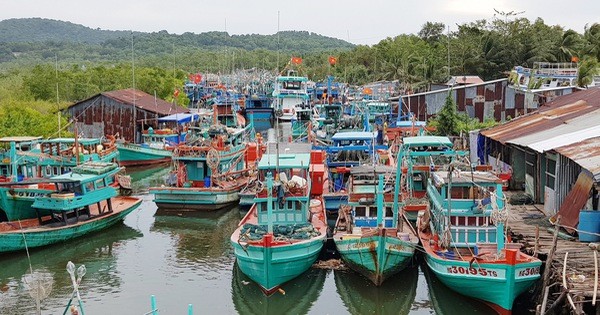
Coastal localities urged to brace for potential tropical storm
Latest
 |
| Illustrative image. (Source: VNA) |
The tropical depression may directly impact the northern and central areas of the East Sea, known internationally as the South China Sea, including the waters around the Hoang Sa archipelago and the Gulf of Tonkin over the following two days, as reported by the agency.
Forecasts show that approximately 65% to 75% of this low-pressure area may intensify into a tropical depression, with a 20% 30% chance of developing into a storm.
Furthermore, due to the influence of the increasingly active southwest monsoon, the central and southern parts of the East Sea, including the waters around the Truong Sa archipelago, the waters from Binh Dinh province to Ca Mau province, as well as from Ca Mau province to Kien Giang province and the Gulf of Thailand, are expected to experience spells of heavy rain and thunderstorms.
During those thunderstorms, there will be tornadoes and strong winds reaching levels six and seven, with wave heights potentially rising above two metres.
The waters from Binh Thuan to Ca Mau and the western part of the southern East Sea, including the western waters of the Truong Sa archipelago, are expected to have strong southwest winds at level five of 29km to 38km per hour. These winds will sometimes reach level six at speeds of between 39km and 49km per hour, with gusts at levels seven and eight, rough seas, and high waves of 1.5 metres to 2.5 metres.
The Standing Office of the National Steering Committee for Natural Disaster Prevention and Control issued a document on June 20 to the Command for Natural Disaster Prevention and Control and Search and Rescue of the coastal provinces and cities from Quang Ninh to Kien Giang as part of efforts to prepare for emergency measures in case of worsening weather.
The committee asked the local offices of the Natural Disaster Prevention and Control and Search and Rescue to be ready to closely monitor warnings and watch weather bulletins in case of strong winds, high waves at sea, and the potential formation of low-pressure areas over the coming days.
Warnings must be sent to captains, owners of vessels, and boats operating at sea to proactively prevent and develop appropriate production plans, thereby ensuring the safety of both people and property.
Local authorities should therefore be prepared, keeping forces on alert in case they need to scramble rescue and relief operations. They should also maintain strict duty shifts and regularly report to the National Steering Committee for Natural Disaster Prevention and Control and the local offices of the National Committee for Disaster Incident Response and Search and Rescue.

















